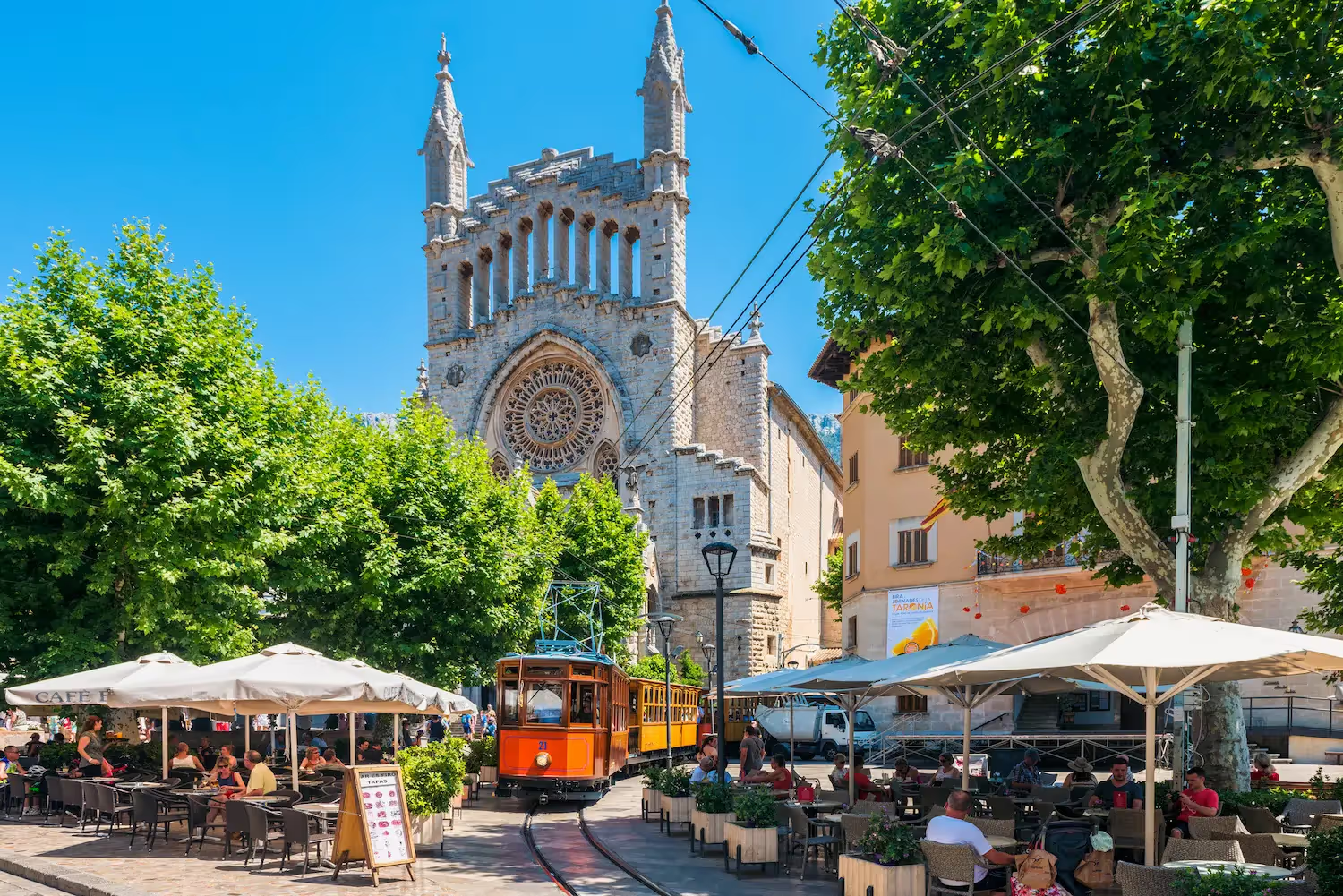

Once referred to as the Golden Valley of Mallorca, for its abundant fruit trees – particularly orange and lemon, but also pomegranate, fig, apricot, avocados and of course, olives, Sóller was originally more accessible via boat and its nearby Port than overland, because of the circuitous mountainous road that connected it to the rest of the island. The construction of a long tunnel in 1997 changed that dramatically, cutting the driving time down by more than half, and making the town more accessible to live in and visit.
History and Local Traditions:
Known for its cathedral, San Bartolomeu (the town saint), first built in the early 1700s, as well as its historic wood train, which goes to Palma during the tourist season, and a smaller tram that runs to Port de Sóller (10-15 minutes) throughout the year. Sóllerics have a very strong heritage, and because of its unique location, has always had its own distinctive way about it. Firo is the big holiday here – a recreation of a battle that occurred in the 16th century when the Christians beat back the invading Moors, or so the legend goes. It’s an incredibly festive time, that has a weeks-long build up with crescent moon and Christian cross flags hanging outside of windows and on the streets and decorations filling the town.


Cultural Life
Once a very sleepy village, Sóller has grown quite a lot in the last decade, and with only about 13,000 residents, there is a strong international community. Homes tend to be traditional stone, with green or blue shutters, as seen in much of the island.
Sóller has a lively pedestrian shopping street and is a town with interesting shops, small markets with local foods such as sobressada and paté, and cafes. There is a real sense of identity here, with many local and independent stores, and while it can be very touristic in the summer months, Sóller has a strong year-round community and traditions. Sóller has long had a connection to the arts, dating back to the late 19th century and the advent of modernismo architecture. A fantastic example of this architecture can be seen in Can Prunera, the main art museum housed in a beautiful townhouse. Here exhibitions of contemporary art are hung alongside 19th and early 20th century pieces, many of which stem from a former private collection. In addition to Can Prunera is the small museum that connects to the train station, where ceramics and prints by Picasso and Miro are on view. Finally, there is a small regional museum of artefacts of the village that documents its history.
Nature and surroundings
Sóller offers an abundance of outdoor life from hiking, cycling, and swimming. It is essentially a gateway into the Tramuntana Mountain range. Step outside your door and you can walk for hours in the mountains or down to the nearby Port, up to the town of Fornalutx or further south, to Deia. The Port has one of the most family-friendly beaches on the island, and of course a port where you can rent a boat for the day or take a ferry to Sa Calobra or Cala Tuent. There are a couple of yoga and pilates studios and in general there is a healthy lifestyle that connects to nature.





